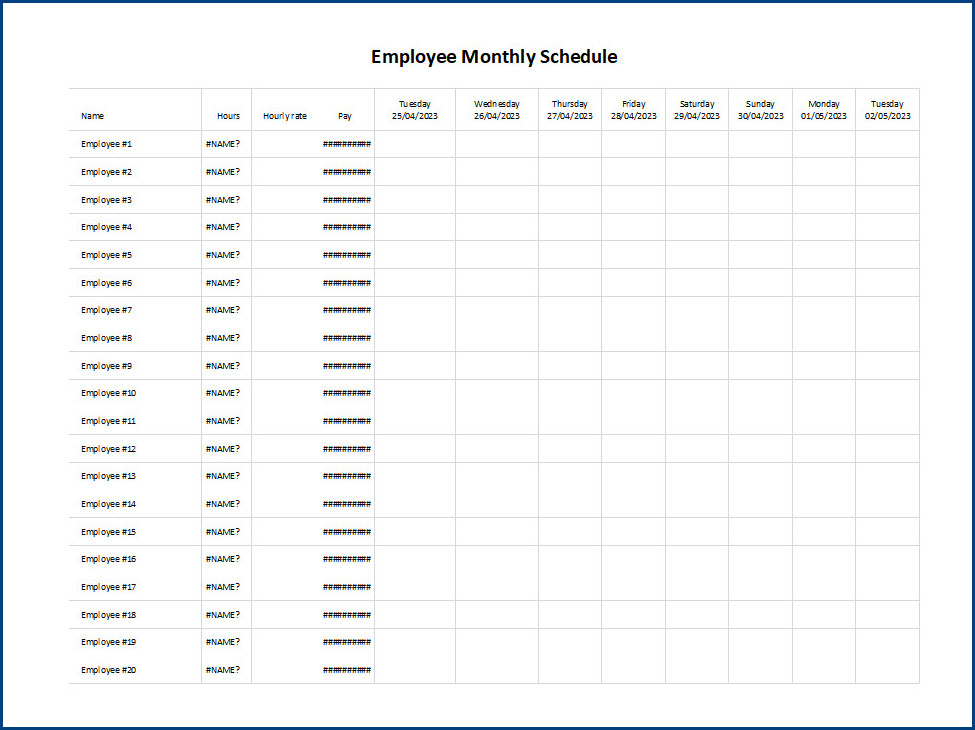What is an employee’s monthly schedule?
An employee monthly schedule refers to a predetermined plan that outlines the working hours and days of employees for an entire month. It provides a comprehensive overview of when each employee is expected to be present at work and the specific tasks or responsibilities they are assigned during those periods. This schedule is typically created by the employer or the management team and is distributed to all employees to ensure a smooth and organized workflow.
The purpose of an employee monthly schedule is to effectively manage and allocate human resources within an organization. By having a clear and well-structured schedule, employers can ensure that there is adequate coverage for all shifts and departments. This helps to prevent any understaffing or overstaffing issues, ensuring that productivity levels are maintained and customer needs are met. Additionally, a monthly schedule allows employees to plan their personal lives around their work commitments, helping to promote work-life balance and employee satisfaction. It also serves as a communication tool, ensuring that everyone is aware of their responsibilities and preventing any confusion or misunderstandings.
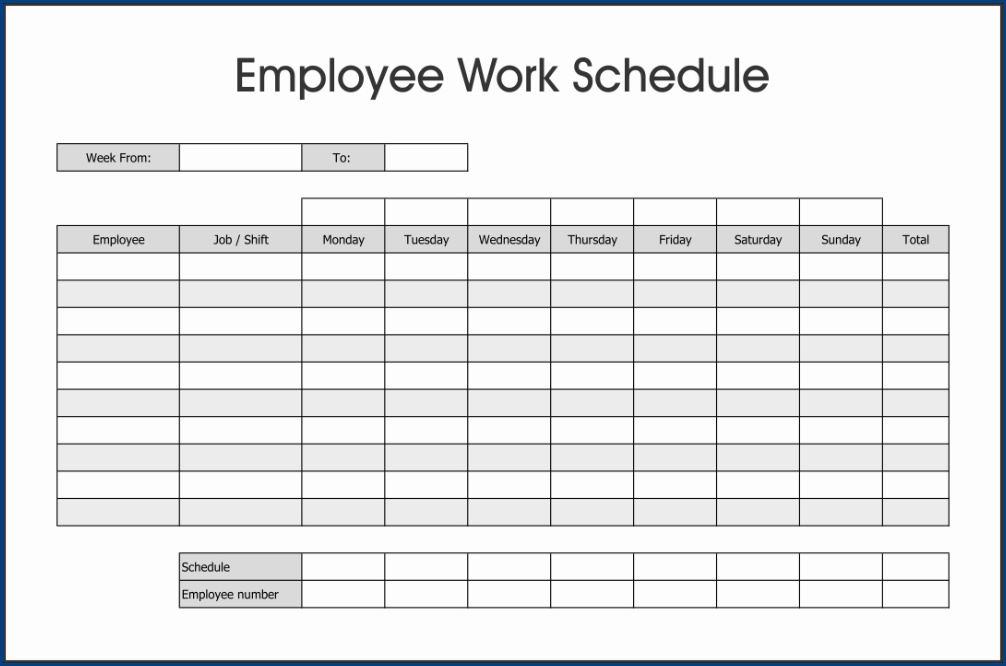
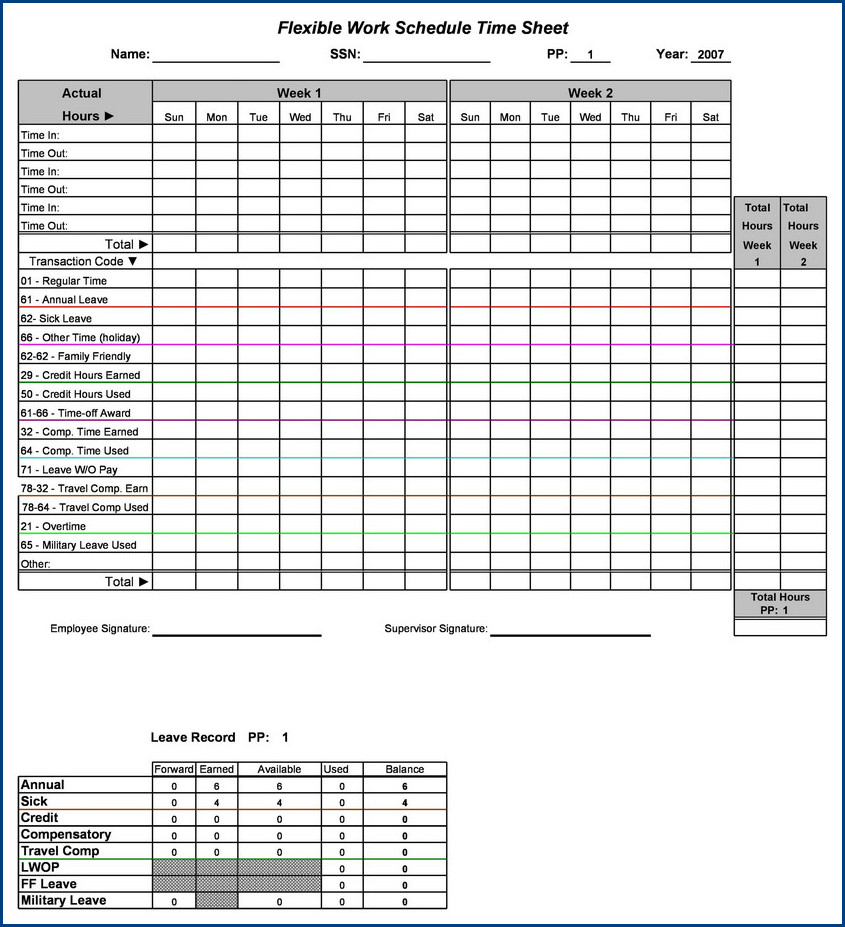
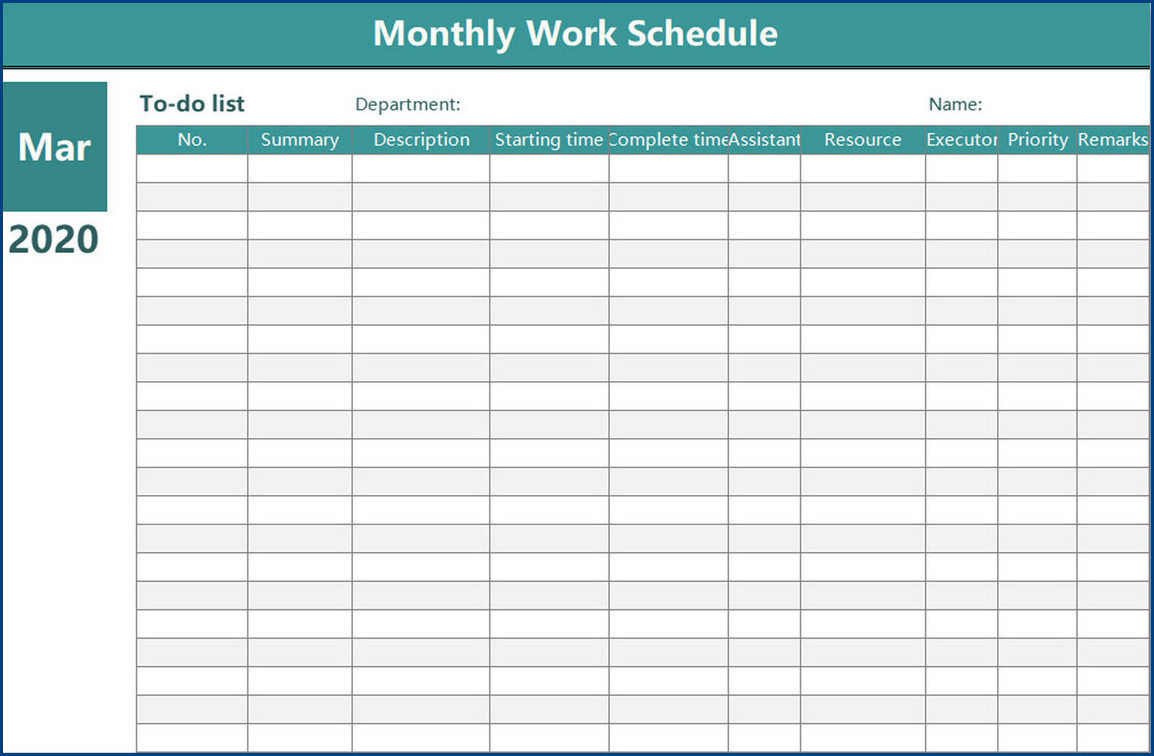
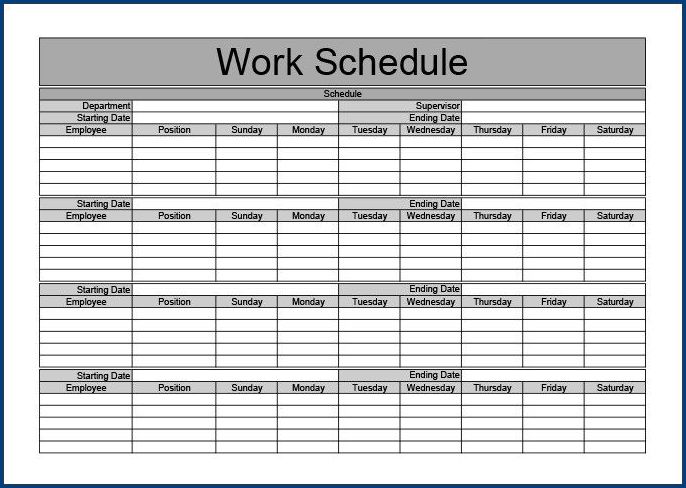
Why is an employee’s monthly schedule important?
There are several key reasons why employee monthly schedules are important:
- Optimized productivity: Having a clear monthly schedule allows employees to prioritize their tasks and allocate their time efficiently. It helps them stay focused and ensures that all necessary tasks are completed within the designated time frame. This leads to increased productivity and overall efficiency in the workplace.
- Effective resource allocation: By creating a monthly schedule, managers can allocate resources, such as equipment, materials, and personnel, effectively. They can ensure that the right people are available at the right time to perform specific tasks, preventing bottlenecks and delays in operations.
- Improved communication and coordination: Monthly schedules provide a centralized platform for employees to access information about their work assignments, deadlines, and any changes in the schedule. This promotes better communication and coordination among team members, reducing confusion and enhancing collaboration.
- Work-life balance: A well-planned monthly schedule allows employees to have a better work-life balance by providing them with a clear overview of their work commitments. It enables them to plan their personal activities aff, reducing and improving overall well-being.
- Enhanced employee satisfaction: When employees have a predictable monthly schedule, they experience less uncertainty and can better manage their time and workload. This leads to increased job satisfaction and morale, as they feel more in control of their work responsibilities.
- Cost savings: By efficiently scheduling employees’ shifts, organizations can avoid unnecessary overtime costs and reduce the risk of labor shortages. Proper scheduling minimizes the need for last-minute adjustments and temporary staffing, resulting in significant cost savings.
What to include in an employee’s monthly schedule?
A well-structured employee monthly schedule should include the following key elements:
- Shifts and working hours: Clearly outline the specific shifts and working hours for each employee. This will help avoid confusion and ensure that there is adequate coverage throughout the month.
- Assigned tasks and projects: Provide a detailed list of tasks and projects that each employee is responsible for during the month. This will help them prioritize their work and stay focused on their assigned responsibilities.
- Deadlines and milestones: Include important deadlines and milestones for ongoing projects or deliverables. This will help employees manage their time effectively and ensure that projects are completed on time.
- Meetings and appointments: Schedule regular team meetings, one-on-one sessions, or any other important appointments that employees need to attend. This will help facilitate communication and collaboration within the team.
- Training and development opportunities: Allocate time for employee training and development activities. This could include workshops, seminars, or online courses that can enhance their skills and knowledge.
By including the above-mentioned elements, employers can create a structured and effective schedule that supports the success of the team and the organization as a whole.
Employee Monthly Schedule Template | Excel – Download
